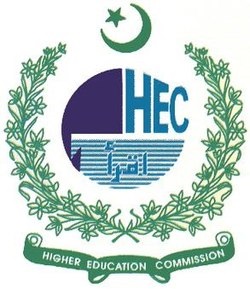China as A Rising Power: Causes and Implications
DOI:
https://doi.org/10.61506//01.00566Keywords:
China, Taiwan, India, Region, Strategic, Indian Ocean, South China Sea, AfghanistanAbstract
The most important development the world has witnessed over the last few decades has been the spectacular rise of China as a new world power. China’s rising significance is multiplied by owing to certain facts such as its economic success, strong military, soft power leverage, revolutionary uncompromised system, visionary leadership and long term economic planning. Nonetheless, Chinese rapid economic growth has accelerated tension since South China Sea and Taiwan continues to haunt the regional stability. Likewise, China’s territorial dispute with India following minor skirmishes in past has altered China’s Foreign Policy tilt in favor of other regional actors. This study undertakes China as a rising power and its geo-economics and geo-strategic implications for the region; since it has been argued by some scholars that such rising is not devoid of security risks for the region. The region stability has remained to global power conflict between China and the US, which in no way seems to bring a thaw between the two ahead in the future. The methodology undertaken for this study is qualitative, descriptive and analytical, which is based on secondary sources. Long before, China was deemed as a regional actor, now it has placed itself in the epicenter of global system- which is from realist perspective driven by power- politics. Apart from economic emergence, China also builds resistance capabilities to the US Asia-Pivot policy and caters her influence in region.
References
Almotairi, S. G. (2021). China’s emergence as a potential superpower and the world order. Margalla Papers, 25(2), 35-46. DOI: https://doi.org/10.54690/margallapapers.25.2.89
Beeson, M., & Li, F. (2016). China’s place in regional and global governance: A new world comes into view. Global Policy, 7(4), 491–499. DOI: https://doi.org/10.1111/1758-5899.12348
Chari, P. R., & Raghavan, V. (2015). Sino-Indian and Sino-South Korean Relations: Compulsions, Comparisons and Contrasts. London: Routledge. DOI: https://doi.org/10.4324/9781315656311
Dennison, L. C., Mark, W., and Dimon, L. (1996). Chinese military modernization. Washington: AEI Press.
Guihong, Z. (2005). China's peaceful rise and Sino-Indian relations. China Report, 41(2), 159-171. DOI: https://doi.org/10.1177/000944550504100204
Guthrie, D. (2012). China and globalization: The social, economic, and political transformation of Chinese society. London: Routledge. DOI: https://doi.org/10.4324/9780203121450
Hameiri, S., and Jones, L. (2016). Rising powers and state transformation: The case of China. European Journal of International Relations 22(1): 72–98. DOI: https://doi.org/10.1177/1354066115578952
Huang, Y. (2016). Understanding China's Belt & Road Initiative: Motivation, framework and assessment. China Economic Review, 40: 314-21. DOI: https://doi.org/10.1016/j.chieco.2016.07.007
Ikenberry, G. J. (2008). The rise of China and the future of the West: Can the liberal system survive?, Foreign Affairs,19-37.
John, A. and Karmel, S. M. (1997). Welcome to the revolution... in Chinese military affairs. Defense Analysis, 13: 255-269. DOI: https://doi.org/10.1080/07430179708405736
John, W. (1995). China in the dynamic Asia-Pacific region. The Pacific Review, 8: 617-637. DOI: https://doi.org/10.1080/09512749508719161
Khan, H. U. (2020). China, the emerging economic power: options and repercussions for Pak–US relations. International Politics. DOI: https://doi.org/10.1057/s41311-020-00265-1
Lardy & Nicholas (2010). China the new great economic challenge? Aviation Week & Space Technology, 146: 68-71.
Li, Y. R. (2004). China: An emerging sugar super power. Sugar Tech, 6(4): 213-227. DOI: https://doi.org/10.1007/BF02942501
Liping, X. (2009). How China thinks about national security. In R. Huisken, (Ed.), Rising China: Power and reassurance, (104-118). DOI: https://doi.org/10.22459/RC.03.2009.08
Mahapatra, D. (2016). From a latent to a ‘strong’ soft power? The evolution of India’s cultural diplomacy. Palgrave Commun 2, 16091. DOI: https://doi.org/10.1057/palcomms.2016.91
Morton, K. (2016). China’s ambition in the South China Sea: Is a legitimate maritime order possible? International Affairs, 92(4), 909–940. DOI: https://doi.org/10.1111/1468-2346.12658
Ritchie, J. (1996). Arguing Chinese economic miracle claims. Journal of Interdisciplinary Economy: 7(4). DOI: https://doi.org/10.1177/02601079X9600700403
Robertson, P. E., & Sin, A. (2017). Measuring hard power: China’s economic growth and military capacity. Defence and Peace Economics, 28(1), 91–111. DOI: https://doi.org/10.1080/10242694.2015.1033895
Shambaugh, D. (2003). Modernizing China’s military: Progress, problems, and prospects. California: University of California Press. DOI: https://doi.org/10.1525/9780520938106
Taifa, Y. (1997). Taiwan democracy under threat: Impacts and limits of Chinese military coercion. Public Affairs, 70: 7-3. DOI: https://doi.org/10.2307/2761226
Thayer, C. A. (2011). Chinese assertiveness in the South China Sea and Southeast Asian responses. Journal of Current Southeast Asian Affairs, 30(2), 77–104. DOI: https://doi.org/10.1177/186810341103000205
Yunling, Z. (2016). China and its neighbourhood: Transformation, challenges and grand strategy. International Affairs, 92(4), 835-848. DOI: https://doi.org/10.1111/1468-2346.12653
Xuetong, Y. (2006). The Rise of China and its power status. The Chinese Journal of International Politics, 1 (1): 5–33. DOI: https://doi.org/10.1093/cjip/pol002
Zhao, S. (1999). Across the Taiwan Strait: Mainland China, Taiwan, and the 1995-1996 Crisis. London: Taylor & Francis.


